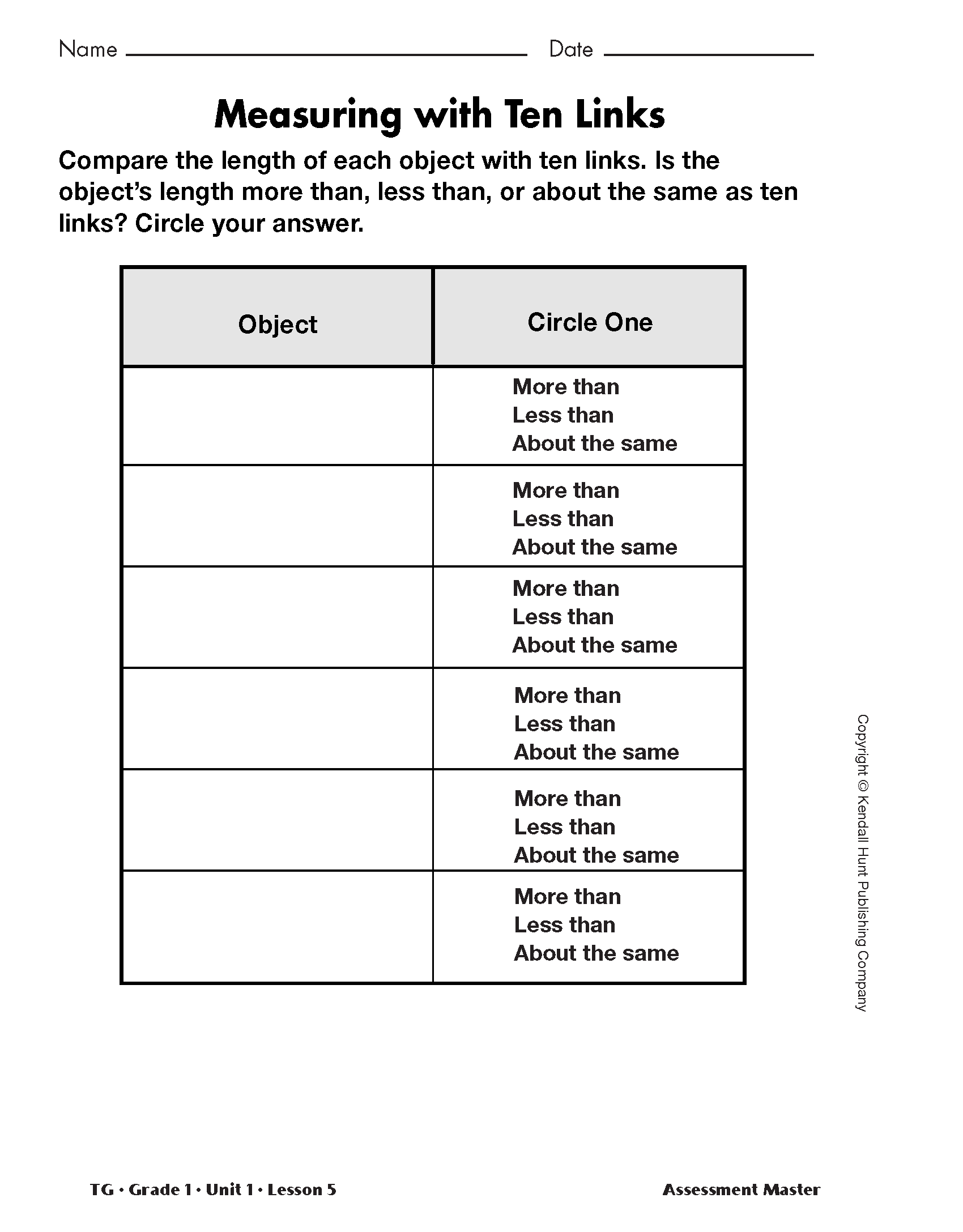Students will need 20 connecting cubes and the number lines
on their desks. Use the following discussion prompts to see if
students can represent a number with objects and if they can
identify whether a number is more than or less than another.
- Build a train of 7 cubes. Find 7 on your number
line.
- Name a number that is more than 7. How can you
show that your number is more than 7? (Possible response: I
know that 9 is more than 7 because I built a train with 9
cubes and it is taller.)
- Show or tell another way that this number is
more than 7. (Possible response: 9 is more than 7 because 9
is "to the right" on the number line. 9 is nearer to the
larger numbers on the number line than 7.)
- Build a train of 13 cubes. Find 13 on your
number line.
- Name a number that is less than 13. Show or
tell how you know.
- What tools have you used to show whether a
number is more than or less than another? (number lines,
cubes, links)
Repeat the activity with other numbers.
Observe students during the Summarizing the Lesson activity to
assess their progress toward comparing numbers using more or
less [E3] and representing a quantity of objects on a number
line and with connecting cubes [E7]. Record your observations on
the Unit 1 Assessment Record
Have students complete the Measuring with
Ten Links individually.
Use the Measuring with Ten Links page
to assess students' progress toward comparing numbers using more
or less [E3] and measuring with non-standard units (e.g., links)
[E8].














